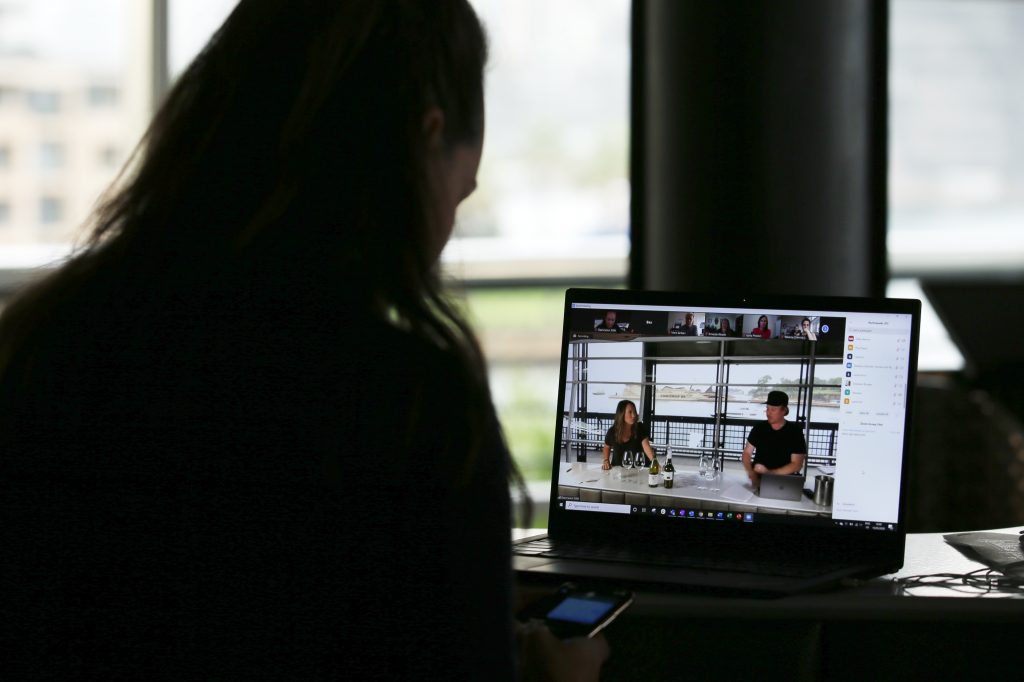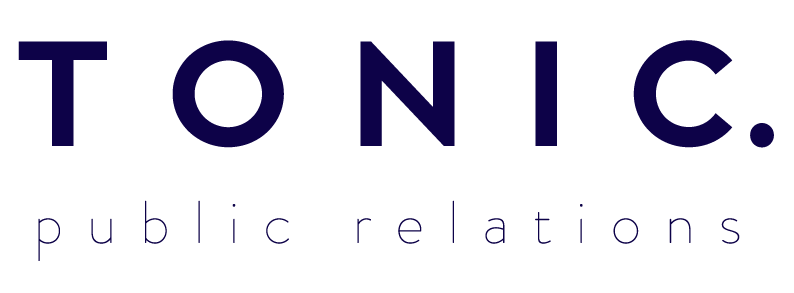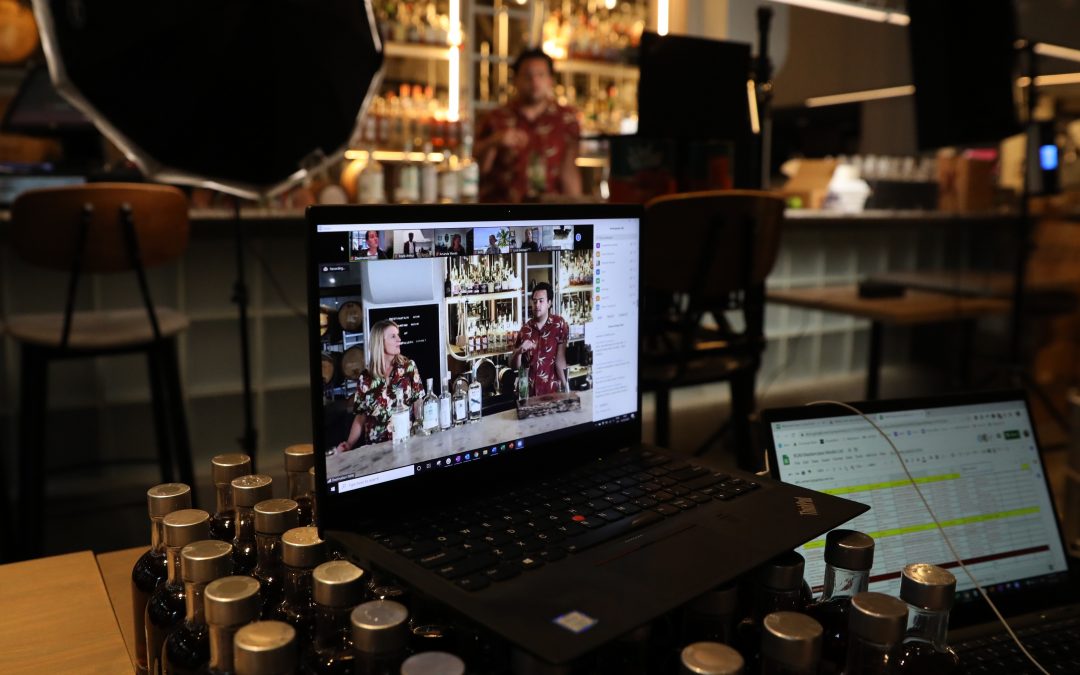Covid meant we all had to adapt to a new way of connecting with audiences – and fast. This was particularly pertinent for travel and hospitality, two industries that we specialise in, which are inherently about engagement and experience.
It was just days until we saw the ‘virtual masterclass’ concept popping up everywhere. And good on people for giving it a crack.
‘It’s just plug in and press record, right?’ We wish.
Within days of the shutdown, we were helping to broadcast our clients LIVE every week to up to 80 viewers at a time around the country. From talent to audio, choosing a location through to lighting, we were put to the test on all things ‘virtual masterclass’. Here’s some of what we learnt along the way.
10 tips for making a live virtual masterclass seamless:
1. Have a purpose.
It’s not a chance to get on and ramble for no reason. What is your purpose for doing it? What do you want to achieve? Who do you want to talk to? Knowing your audience is essential so that you can deliver content they will want to tune into. You don’t want to go to all of this effort to not have anyone show up.
2. Talent is everything.
Ideally, have two people on screen to bounce off of eachother (and fill in when someone goes blank). Talent really need to dial up the charisma – the screen dulls this so it definitely needs to be dialled up. Make sure they move naturally and are enthusiastic. People want to watch talent that make them feel good, not like it’s just another Zoom meeting (they’ve already had dozens of those this week).
3. Map out run order, timing, what you want to cover and REHEARSE.
In the rehearsal (ALWAYS DO A REHEARSAL) monitor chemistry, timings, and flow alongside picture and sound. Keep timing tight. There’s no set time amount it should be – only create content that is worth sharing. If that’s 5 minutes, 15, or 45, great. But don’t talk for 45 minutes when it really can be covered in 15.
4. Invest in one of the latest iPhone or iPads with 12x camera and 4K video.
A Gen 2 iPad won’t cut it (we tried). Sure, it’s exy but you can do Afterpay and if you’re a business, banks have quite a few interest free loans at the moment to help businesses who need to invest in things that will help them get back on their feet.
5. Get wireless mics.
You need the sound to be spot on. There’s research that shows people will put up with a loss of picture longer than they will sound. Invest in good quality lapel mics to get clear sound. See our gear guide below for the bits and pieces we invested in that work.
6. Engage with the audience.
Ask the audience questions and encourage them to participate and use the chat box if that functionality exists. Look at the camera like you’re talking directly to someone, like they’re in front of you. It helps to have a laptop with the audience’s web cams on it so you actually feel like you’re talking to someone.
7. Mute all upon entry.
We use Microsoft Teams for our everyday work but Zoom seems to have better audio and functionality for live sessions. ‘Mute all upon entry’ is a setting in Zoom. Use it! Also enable waiting room so you can let the callers in when you’re ready rather than having them seeing you making that last minute hair fix!
8. Get good internet and test it
A live masterclass is no time for the internet to cut out. You’re sure to get grey hairs if it does. If you’ve even had so much as a slight drop out previously, get a back up option. Hot spotting on your phone can work, but it should be a back up ideally.
9. Have fun
Your viewers are at home and this is probably their 50th Zoom call for the day – don’t make it a chore. Try to replicate the experience they’d have if they were with you at your restaurant, bar, experience, event, hotel etc.
10. Be prepared for stuff ups
We’d spent two hours setting up lighting, sound, and rehearsing and had four minutes until the live session started. All of a sudden, a huge stream of sunlight came blaring into our location across our talent’s faces and completely throwing off the picture. In three *highly stressful* minutes, we moved our set across the room and then began the call on time. No one in our audience had a clue. Have contingency plans for everything: internet cuts out, audio cuts out, iPad falls over, talent goes blank. Anything is possible.
Not sure what gear you need to do all of this? Read our audio gear guide.

Photo Jane Dempster

